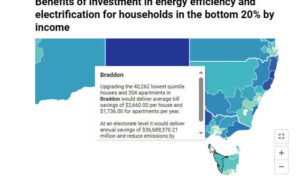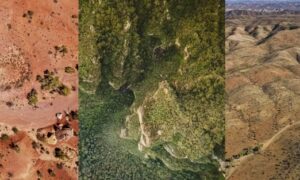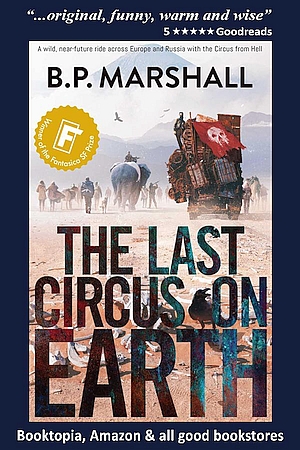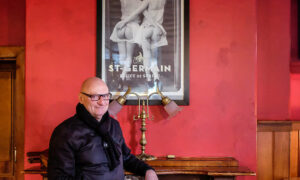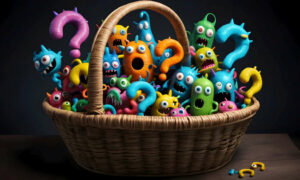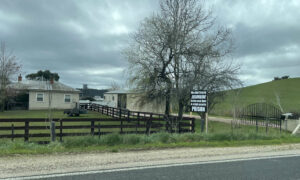Tasmanian author Heather Rose has received global acclaim for her work, which has been translated into multiple languages.
At Stella Day Out earlier this year, she talked about her work with Danielle Wood, a senior lecturer in creative writing at the University of Tasmania.
White Heart
Rose’s debut novel, White Heart, follows the story of two siblings in Tasmania. It emerged after she had attempted two previous novels in her twenties.
“I was determined to finish a novel, to actually write one to completion,” she said at Stella Day Out.
She had been a copywriter for ten years when she began working on White Heart.
“Copywriting is all about brevity,” Rose explained.
“Every word counts. You do a headline, you do the body copy, and by the end of the body copy, people latch on to the brand at the bottom of the page. That’s what matters, you have to get them through to the brand. It was really difficult to unpick myself from that craft where the writing is tight and highly efficient and expand into character and into plot and into the mysterious flow of the novel.”
Rose moved into a new house during this time and discovered that her neighbour was a famous writer. She decided to observe them to learn how to write a novel.
“My bedroom window looked into their yard, and there were four windows along the side of their house,” she said.
“I had two children, so I would [work on White Heart] two or three nights a week. I’d start at nine and work till midnight. This was how the novel was progressing. But I would go to bed and the light in one of the rooms across the garden was always on. I could see the back of a computer. I thought, ‘They write at night too. Okay, good.’ So, the next night I wrote till one o’clock in the morning and the light was still on. Then I began writing till two or three in the morning. I got more flow because I was giving myself a longer period of time to immerse myself in the book, in the story, and in the language and in the craft. The most amazing thing was this light was always on. This person worked much harder than I did. I was like, ‘Wow, okay, that’s what it takes to be a writer.’”
Rose eventually finished White Heart, and shortly before it was published, she took her children and the children from next door tadpolling at a friend’s dam under kunanyi / Mount Wellington.
“We were up to our waists in muddy dam water, wandering about with nets made from panty hose and coat hangars,” she said, “trying to catch tadpoles, and one of the children from next door says, ‘We tried to turn tadpoles into frogs last year. Someone told us if you leave the lights on, they’ll think it’s sunshine.’”
It was in this moment that Rose realised her neighbour wasn’t writing at night at all – they were just trying to get tadpoles to grow into frogs under the light.
“But that light kept me going, and it got me there,” she said.
“The book got published, and it was book number one. It felt extraordinary to have it written and then published.”
The Butterfly Man
Rose’s next novel, The Butterfly Man, is set on kunanyi / Mount Wellington and follows a man who unexpectedly finds love and wonder, but struggles to find forgiveness. It is based on the 1974 disappearance of John Bingham, the seventh Earl of Lucan.
Rose realised that the only way she could write The Butterfly Man in the midst of ‘life’ was to hide away in a “little house” on the slope of kunanyi / Mount Wellington.
“I had a baby girl too at this stage, my third child,” she said, “so I would take her with me and she would wait for me to start typing before she’d go off to sleep. I’d bring the boys up there too and I’d take them all on walks on the mountain, because I knew it was really important to capture the mountain somehow.”
She described kunanyi / Mount Wellington as “a magical world of change” because “it’s always transforming and evolving through the seasons”.
“I loved immersing myself up there, and my recollections of the delights of walking with the children will stay with me forever. We made our own pathways up the mountain and we followed the old pipeline track and played so much on the mountain during the writing of [The Butterfly Man].”
The novel evolved out of an experience Rose had when she was 21-years-old.
“I moved to London [and] I went to work for a lord and lady in Surrey,” she said.
“The lady had Alzheimer’s disease and I was her companion by day. Once my work finished, the lord thought this was a spectacular moment in his life, because there was this little Pygmalion from Tasmania and she didn’t know anything about opera and she didn’t know anything about wine. He loved to introduce me to people and encourage me to tell them travel stories from the two years I’d been in Europe and Asia. He used to find this very fascinating. It was an insight into peerage and privilege and entitlement.”
Soon after this, Rose developed severe arthritis.
“I couldn’t get out of bed for a long period of time, and [the main character of The Butterfly Man] just came to me through the miasma of opiates,” she explained.
“He was the classic unreliable narrator. After I got well, I started to write the stories down, and I went out to dinner with [investigative journalist] Lindsey Simpson [who] said, ‘He sounds like Lord Lucan.’”
Rose returned to The Butterfly Man with Lord Lucan in mind and finished it six years later.
“It was a book where I had to fight every day to claim myself as a writer, amidst the demands of family, running a business and being in service to my community. I had to say, ‘This is what I want. This is my career.’ I love my community, I love my family – [but] I want to be a writer, and a writer writes, and a writer writes books. It was hard, it was really hard, to squeeze it all in.”
The River Wife
The River Wife, Rose’s third novel, is set in remote Tasmania and focuses on Wilson James, a writer who encounters a mysterious woman who challenges his beliefs and unravels his perception of reality.
Rose said at Stella Day Out that the story came to her in the days after she gave birth to her daughter, who was born with asthma.
“The only way I could get [my daughter] to sleep was to sit her upright on me,” Rose explained.
“This went on for months, so my sleeplessness was quite extreme. That’s where the story came from.”
Rose found crafting the novel and ensuring its believability a difficult challenge because the mysterious woman, the ‘River Wife’, lacked a classical education. (Rose explained that the River Wife’s father purposely avoided educating her so she could stay true to her natural affinity for the forest and water.) But Rose eventually overcame this difficulty, and The River Wife was well received when it was published.
“Quite recently, my partner asked me if I would read The River Wife to him, and we got about halfway through [before] he had to go away for work. I finished reading it myself while he was away, and I actually had no idea how sad it was. I just didn’t know.”
The Museum of Modern Love
The Museum of Modern Love tells the story of a movie soundtrack composer who is struggling with his wife’s degenerative illness. He ends up finding solace in Serbian artist Marina Abramović’s performances at the Museum of Modern Art in New York.
The novel took eleven years for Rose to write. Shortly after it was published, the novel would win Rose the 2017 Stella Prize for the best book of fiction or non-fiction written by an Australian woman.
It was a career-defining moment for Rose.
“With the prize money I received – and a grant from the Australia Council for my next novel – I realised I could give myself a year to write full-time,” she said.
“It was the first time I had ever written day after day instead of at night, and it felt wonderful. There was a residency attached to the Stella Prize that also gave me a wonderful property to write at for some weeks.”
The novel that Rose completed at the property was Bruny.
Bruny
Rose admitted at Stella Day Out that she wrote her 2019 novel Bruny because she “got cross”.
“Because I was a business woman, I was invited to a conference at Wrest Point Casino in 2014,” she explained.
“There was a very prominent world leader there [with] a very large international contingency of guests, and it seemed like Tasmania was for sale. Everything was for sale. Our meat, our wool, our pastures, our water, our agriculture and aquaculture. I drafted some essays about it, but they all sounded very preachy and ranty and I didn’t like the tone, so I set them aside.”
Several years later, Rose walked to the end of Kingston Beach one day and saw a “strange cloud structure” that “looked like a bridge” between North Bruny and mainland Tasmania.
“I thought, ‘Oh, that’s funny’,” Rose said. “‘I wonder what it would be like if there was a bridge from Tinderbox to Bruny.’”
Bruny’s plot grew out of this. The novel centres around a massive bridge connecting Bruny Island to mainland Tasmania. Following a bombing that damages the bridge, United Nations troubleshooter Astrid Coleman returns to Tasmania to help her brother, the premier, mediate the conflict the bridge has created.
“I had to go and find people who knew about engineering and bridge construction and explosives,” Rose said.
“I reached out to a connection who’s ex-military and asked him if he would put me in contact with someone who knew about how you could blow up a bridge.”
Rose had come up with the exact dimensions of her fictional bridge because she knew “it would make a difference to a bomb analyst”.
“I put [all the dimensions] in an email to this person – who shall forever remain unnamed – and asked him if he could help. About two weeks later, I was forwarded this extraordinary email with a three-page report attached outlining exactly what it would take to blow up this particular bridge, and in the email [the analyst had written], they asked: ‘I take it this is a fictional scenario?’”
Bruny went on to become one of Australia’s bestselling novels in 2020. It also won the 2020 Fiction Book of the Year in the Australian Book Industry Awards, and was shortlisted for the Independent Booksellers Book of the Year.
The novel is currently being adapted into a TV mini-series. Filming is expected to start in Tasmania early next year.
Nothing Bad Ever Happens Here
Rose’s most recent work is a memoir called Nothing Bad Ever Happens Here.
While talking at Stella Day Out, she described the process of writing the memoir as “awful”.
“I didn’t like it,” she said.
“One starts with the idea that you can somehow grapple with a sense of self at various ages in the past, but in order to do that with any integrity and authenticity, I had to really go back there. So, instead of being visited by [fictitious] characters, I actually had to go and visit the character of myself – and that was so painful.”
Nothing Bad Ever Happens Here was Rose’s first attempt at writing non-fiction. She was aware readers would expect her to write the book in the same style of her novels, so she set out to do exactly that. Doing so was “really difficult”, however.
“Not only did I have to go back and revisit things that were very painful,” she said, “I had to [learn] the craft of non-fiction. It’s a very different form to fiction. It was a very emotional process; I cried a lot.”
Despite this, Rose said the memoir helped her put the past to rest.
“There was certainly a freedom that’s come [from] it, and that was unexpected.”
Nothing Bad Ever Happens Here has been shortlisted for the Independent Book Awards.

Heather Rose (left) and Danielle Wood (right) in conversation at Stella Day Out.
Callum J. Jones studied English, History, and Journalism at the University of Tasmania. He has written fiction and non-fiction for Tasmanian Times since 2018, and can be traced by the smell of fresh coffee.
Follow him on Twitter (@Callum_Jones_10) and Facebook (@callum.j.jones.creative).





